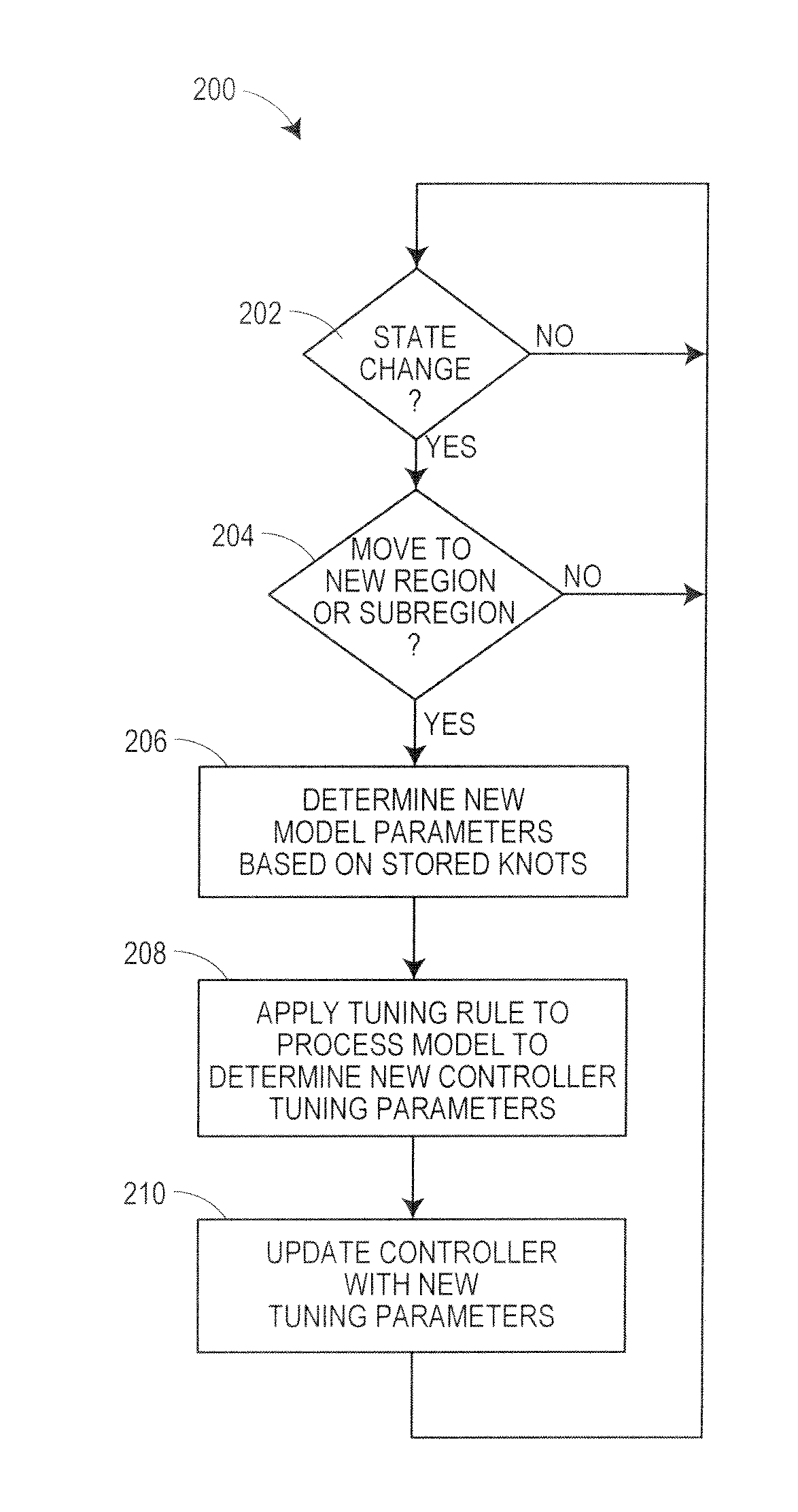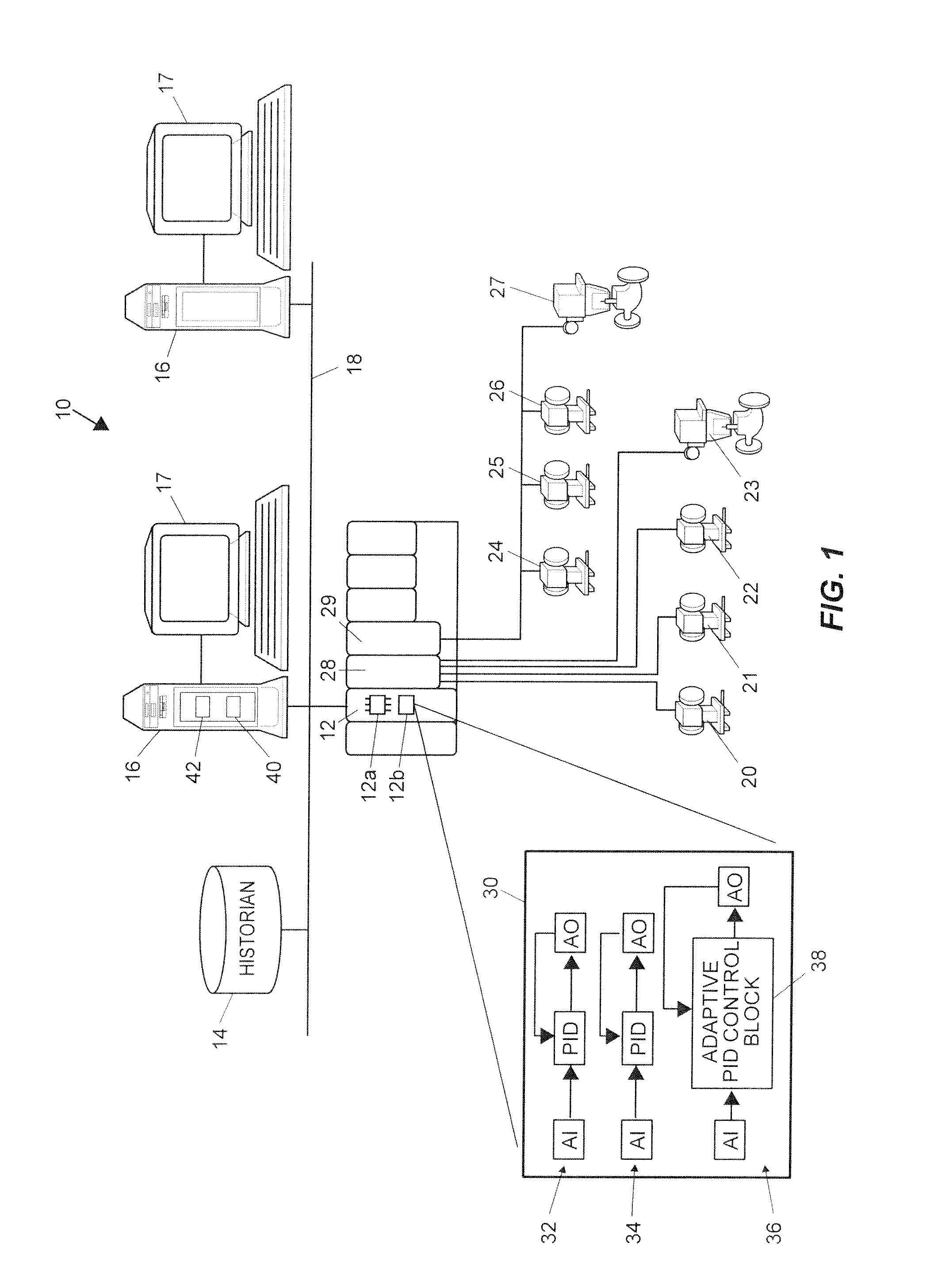Continuously scheduled model parameter based adaptive controller
a controller and model parameter technology, applied in the field of process control techniques, can solve the problems of inability to adjust the controller, increase exponentially, and overshadow the advantages of prerouted controller tuning systems, so as to reduce process excitation and shorten the adaptation time
- Summary
- Abstract
- Description
- Claims
- Application Information
AI Technical Summary
Benefits of technology
Problems solved by technology
Method used
Image
Examples
Embodiment Construction
[0040]Referring now to FIG. 1, a process control system 10 for use in controlling, for example, an industrial process such as a refinery, a drug manufacturing process, a power plant, etc., includes a process controller 12 connected to a data historian 14 and to one or more host workstations or computers 16 (which may be any type of personal computers, workstations, etc., each having a display screen 17), via a communications network 18. The controller 12 is also connected to field devices 20-27 via input / output (I / O) cards 28 and 29. The communications network 18 may be, for example, an Ethernet communications network or any other suitable or desirable communications network while the data historian 14 may be any desired type of data collection unit having any desired type of memory and any desired or known software, hardware or firmware for storing data. The controller 12, which may be, by way of example, the DeltaV™ controller sold by Emerson Process Management, is communicatively...
PUM
 Login to View More
Login to View More Abstract
Description
Claims
Application Information
 Login to View More
Login to View More - R&D
- Intellectual Property
- Life Sciences
- Materials
- Tech Scout
- Unparalleled Data Quality
- Higher Quality Content
- 60% Fewer Hallucinations
Browse by: Latest US Patents, China's latest patents, Technical Efficacy Thesaurus, Application Domain, Technology Topic, Popular Technical Reports.
© 2025 PatSnap. All rights reserved.Legal|Privacy policy|Modern Slavery Act Transparency Statement|Sitemap|About US| Contact US: help@patsnap.com



